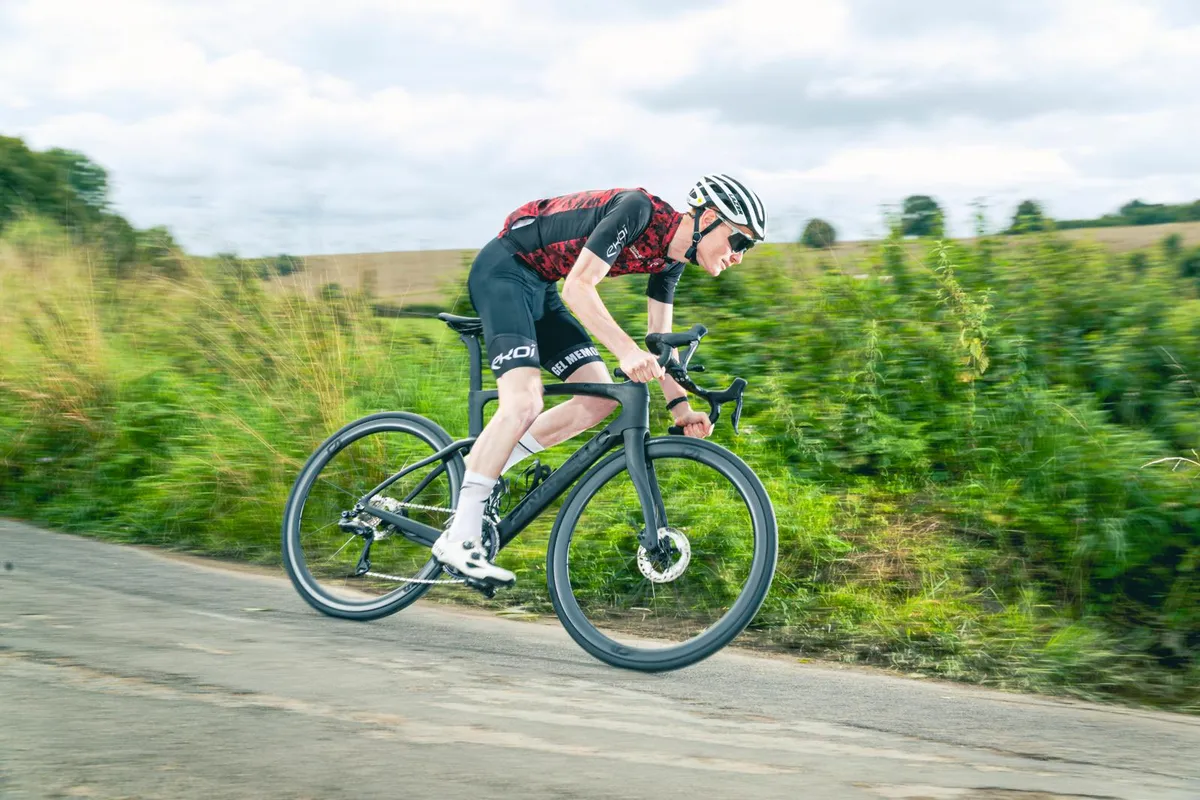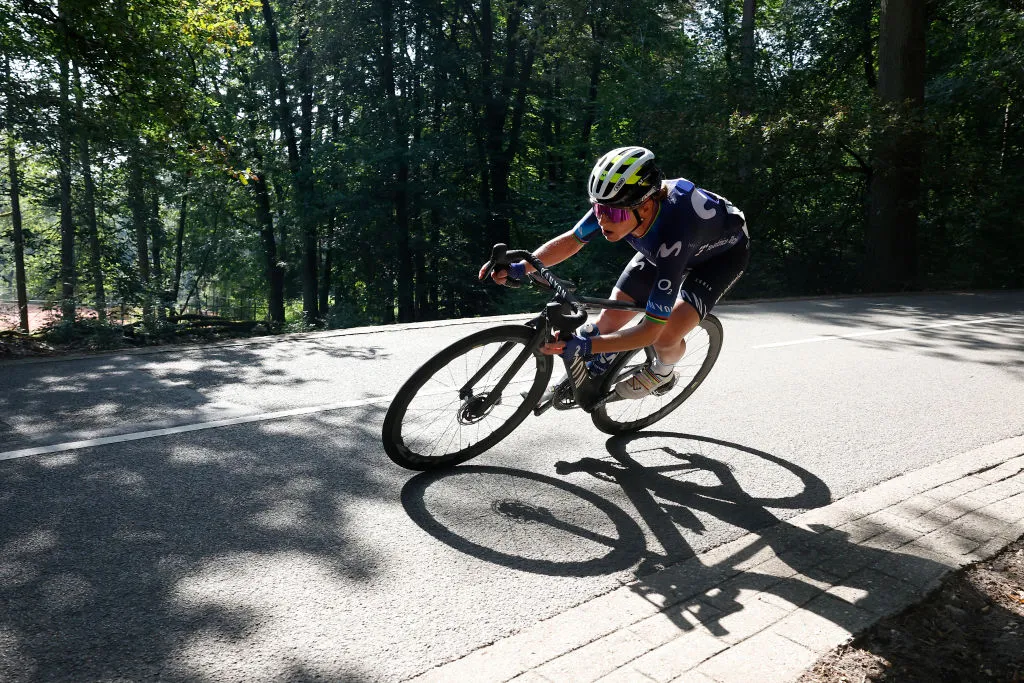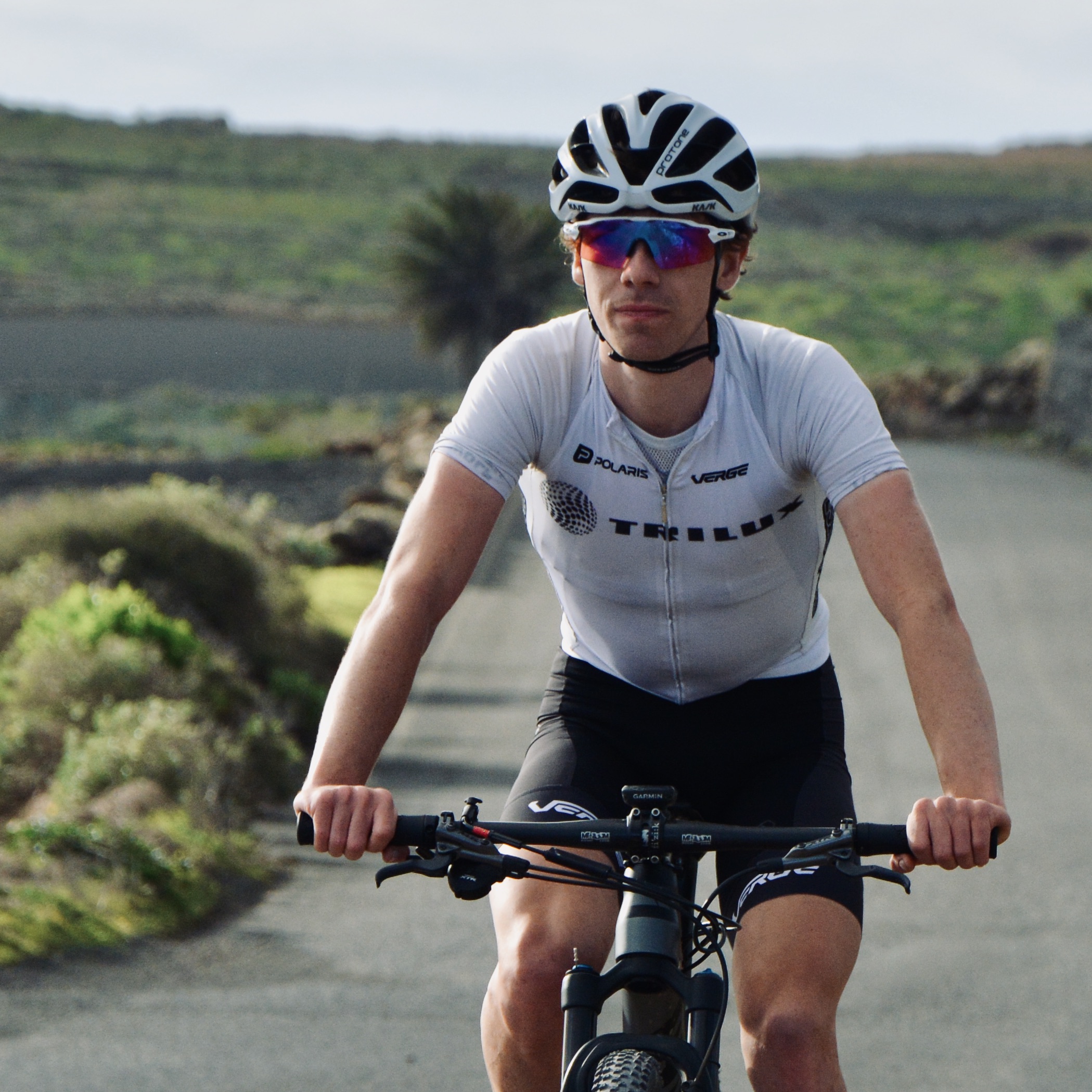Pretty much every cyclist will inevitably need to take a break from riding at some point.
From intentional ‘off-season breaks’, to illness, injury, family, work and social commitments, there are many reasons why it’s likely you’ll be off the bike for a while at some point.
When we have to stop riding – be it an enforced break or just falling out of the habit – a common concern is whether all that hard-earned fitness will disappear in an instant – and if it will take forever to feel strong again when we manage to regain some consistency.
So how quickly do you lose fitness? And how fast can you get it back?
Here, we’ll take a look at what happens to your body and fitness as a result of a riding break and what you can do to efficiently reverse or minimise fitness loss in these situations.
Understanding the stages of detraining

Stage 1: 1-14 days
Over the first 14 days off the bike, 'detraining' is usually quite minimal and quickly reversible.
This detraining is largely a result of a drop in blood volume – or, in other words, the total amount of blood in your body. You can start to see this as soon as after two days off the bike. The drop in blood volume is a result of both a fall in blood plasma volume (the amount of fluid in the blood) and red blood cell volume (the number of oxygen-carrying blood cells).
The fall in blood volume has two key effects. Firstly, it reduces the capacity of the blood to carry oxygen to the working muscles. Secondly, the heart doesn’t fill as effectively with blood between beats and therefore less blood is pumped by the heart per beat.
Collectively, these factors mean less oxygen is delivered to the working muscles and VO2 max – the maximum rate at which the body can take on and process oxygen to produce energy – is reduced.
After six to 10 days off the bike, the muscles are also affected. This includes changes in the transporters and enzymes that are responsible for moving fuel into muscles and processing it to generate energy.
Studies suggest these changes can reduce the capacity of the muscles to use oxygen to generate energy by as much as 50 per cent in very well-trained cyclists. It’s worth saying, though, that this is an extreme example and typical recreational-level cyclists will see a much smaller drop.
In real terms, you may notice your heart rate is roughly five to 10 per cent higher for a given power output, which is a compensation mechanism to make up for the fact that less oxygen is being delivered to the muscles per beat.
You may also find you can’t push quite as hard as you did previously, particularly over efforts lasting from three to 20 minutes, which are heavily dictated by VO2 max.
You may also need to eat a bit more to avoid bonking on your longer rides, since the muscles will store less glycogen, and your perception of effort and blood lactate levels could also be a little higher.

Stage 2: 2-4 weeks
Unlike the first 14 days, when detraining effects are quite minor and easily reversible, the period from two to four weeks is when more significant detraining starts to set in.
Throughout this period, we begin to see some bigger structural changes in the body. For example, the thickness of the left ventricle of the heart can start to decrease, further limiting how much blood the heart can pump per stroke.
This seems to occur most notably over weeks two to three and then stabilises after that point. This change to the size of the heart muscle (in conjunction with the changes occurring in stage one) results in a drop in VO2 max of around four to 14 per cent in very fit cyclists, and around three to six per cent in less well-trained cyclists.
We also see a decline in capillary density at around weeks two to three. Capillaries around the muscles are important for ensuring efficient diffusion of oxygen from the blood to the muscles, and are another factor impacting VO2 max, as well as threshold power (e.g. Functional Threshold Power or FTP).
Endurance abilities can also start to wane. According to one study, time to exhaustion can reduce by as much as 25 per cent, though this seems to be quite an extreme case and other studies have observed more modest decreases of less than five to 10 per cent. Initial level of fitness will be a key determining factor in how much of your cycling endurance is lost, with fitter athletes losing more.
Overall, through this period, you’ll notice a bigger drop in fitness. Your punchiness, endurance and threshold power will all take a hit, and these changes will take longer to reverse, since you will need to reverse the structural changes to muscle size and capillary density, as well as the more transient changes seen in stage one.
You’ll notice heart-rate response is slower. It takes longer for your heart rate to come down after a hard effort, it may be slower to rise when you step the intensity up and your breathing rate will be elevated for a given wattage.

Stage 3: 4+ weeks
If you’re off the bike for four or more weeks, many of the detraining adaptations seen through stages one and two continue, before stabilising.
Enzyme activity, for example, may decrease by between 25 and 40 per cent after a four to 12-week hiatus, but then generally remains slightly elevated above pre-training levels. VO2 max may have dropped between six and 20 per cent, depending on initial training status.
Muscular strength, which up to this point will have remained relatively consistent, will likely also start to decrease throughout this period, although studies suggest that strength adaptations can be maintained with minimal training for up to 12 weeks.
There will also be changes in muscle fibre composition. For endurance cyclists, this will be a shift toward fewer aerobically efficient Type I fibres (or so-called ‘slow twitch’ fibres) and more anaerobically inclined ‘Type II’ fibres (aka ‘fast twitch’ fibres). This significantly impairs a wide range of cycling abilities, since cycling is predominantly an aerobic sport.
A case study of an Olympic rower nicely demonstrates the collective impact of detraining over an eight-week window. When in peak form, the rower was able to produce 399W at a lactate level of 2mmol. This is a wattage that the rower would have been able to hold for many hours at a time. After eight weeks of inactivity, this wattage had decreased by more than 100W, or roughly 25 per cent.
Again, however, the elite-level fitness of the rower will have provided a higher ceiling from which to drop
How long will it take to get fit again?

Okay, on to the burning question.
Having taken time off the bike, how long does it take to build back fitness to a level you were at before your break?
Unfortunately, there’s very little data available to give an accurate answer on this, and in practice, it will vary a lot from person to person.
Sadly, retraining always takes longer than detraining, so the fitness you lose over a two-week training break, for example, will take more than two weeks to build back. This is why training consistency is so important and arguably the biggest determinant of continued fitness progression.
If you’ve only taken one to two weeks off, you can be back to previous fitness levels within around two to four weeks. If you’ve had longer off, it will usually take more time to build fitness back.
In the case study of the Olympic rower mentioned above, it took eight weeks of training to build back roughly 50 per cent of the fitness that was lost after an eight-week training break.
When building back fitness, you’ll generally see fairly rapid initial gains, which will then taper off as you approach your previous fitness level.
Retraining also depends a lot on training history and prior fitness level. From coaching and personal experience at High North Performance, we’ve found riders who have a long training history (for example, they have been training relatively consistently for five or more years) will be able to build fitness back faster than those with a shorter training history.
In some respects, the body ‘remembers’ how to adapt to training and does this more effectively the longer an athlete’s past training history is.

How to minimise fitness loss
If you need to take some downtime from riding, but can still squeeze a little training into your schedule, is there anything you can do to minimise fitness loss?
Again, there’s not a whole lot of research in this area, so it’s hard to say with certainty. However, one fairly comprehensive study found fitness was best maintained either by:
- Reducing the length of your training sessions. For example, rather than riding five days per week, for two hours each, you could ride five days per week for one hour, keeping the intensity of the sessions the same as before
- Reducing the frequency of your training sessions. For example, rather than riding five days per week for two hours each, you could ride for three days per week for two hours each, keeping the intensity distribution the same as before.
In this study, it was found that reducing the length of training sessions by one third was enough to maintain VO2 max, as well as endurance. Reducing training frequency from six times per week to two times per week was also sufficient to maintain, at the least, higher-end fitness attributes (the impact on longer-duration endurance wasn’t tested).
Reducing training intensity as a means to cut down on riding doesn’t seem to maintain fitness quite so effectively, so it’s important to still include some higher-intensity training if you’re trying to minimise fitness loss.
If you’re injured and can’t manage to ride the bike, you may also wonder about the benefits of cross-training (participating in other sports, such as running or swimming).
Cross-training can help curtail the effects of detraining, but won’t completely make up for your time off the bike, since you’ll be using different muscles and therefore developing them in different ways.
If possible, try to opt for aerobic cross-training that elevates your heart rate in a similar way to cycling. This will help to maintain cardiac output and blood volume, even if you still see some detraining at the muscles. Running, aqua jogging, rowing or using the step machine and cross-trainer at the gym are good options.

Don’t panic
Periods of detraining are an inevitable part of being a cyclist, and fitness progression is rarely ever linear. Short periods of time off the bike (up to two weeks) will have very little long-lasting impact on fitness, provided they don’t happen too regularly, and you’ll be able to build back fitness within a matter of weeks.
In these situations, don’t worry if you’re facing a short training break, because they can be helpful for providing a mental break from riding and rejuvenating your motivation.
Longer periods away from training will have a more notable impact on fitness, with high-intensity abilities being hit first, followed by endurance and then strength. Athletes who have a higher level of fitness and longer training history will see bigger declines in fitness, but will also generally be able to reverse these changes faster.
If you’re looking at a long lay-off, think about whether you can do anything to help maintain some of your fitness, such as by reducing your riding volume or incorporating some cross-training. Completing one or two higher-intensity sessions each week can go a long way to helping you maintain fitness.
